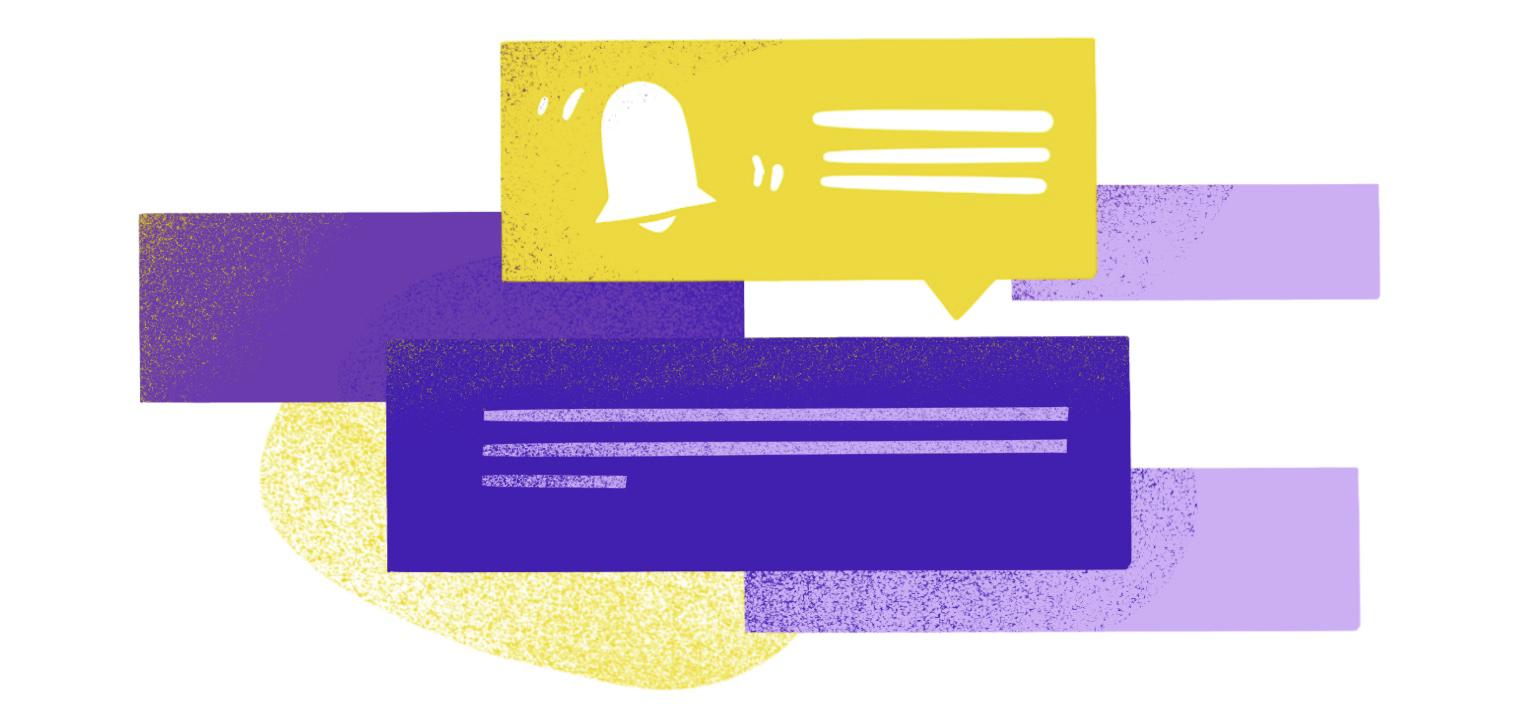A notification API is a programming interface that enables applications to send and display alerts, messages, and updates to users across multiple platforms and devices. It provides developers with standardized methods to trigger push notifications, in-app messages, email alerts, and SMS notifications, allowing applications to communicate with users in real-time without building notification infrastructure from scratch.
Notifications are small messages displayed on users' devices. They are available in a wide range of applications from smartphone apps in different operating systems, desktop browsers, mobile browsers, and desktop applications. The use of notifications exploded with the arrival of smartphones. Notifications have become one of the most affordable and effective ways to engage users.
What are Notification APIs?
Notifications are displayed by an app or website by accessing the notification system of the operating system or browser. APIs or Application Programming Interfaces act as the communication channel between the application and the ecosystem in which the notification is displayed. The application and the operating system are written in different programming languages, and API is the common communication protocol used to communicate between the two systems.
Each operating system or browser has a different set of APIs to access the various functionalities of the ecosystem. The API used to display notifications is referred to as the notification API. Developers must use the APIs of each ecosystem to effectively use the notification system and all its functionalities.
It’s important to distinguish between push APIs and notification APIs. A push API is used when messages have to be ‘pushed’ from the server from which the application runs. Notification APIs deal with only notifications. An app downloaded on a phone can generate notifications without any messages from the server. Enabling push notifications requires the use of both a notification API and a push API.
Let’s review some of the most popular notification APIs used.
Android Notification API
Android is the most used smartphone OS in the world. It has more than 2.8 billion active users around the globe with the number of users growing day to day. Android apps give developers and businesses access to the operating system’s large user base. Android has its own notification system and API to display app notifications for the OS. The API’s syntax and logic must be followed to effectively make use of the Android notification system. Android provides comprehensive documentation for the APIs on the Android developer site.
Apple (iOS and macOS) Notification API
The widespread growth in the use and importance of notifications was propelled by the launch of the iPhone. Though iOS and macOS do not have the largest number of users, they have the most profitable users. The average revenue per Apple customer is significantly higher than that of other ecosystems. It’s critical to have a foothold in Apple’s ecosystem to reach these users.
To make use of Apple APIs, developers need to install Xcode from Apple and have a Mac computer. The notification API works in conjunction with the Apple Push Network (APN). APN also contains the push API for the Apple ecosystem. Design guidance for notifications and developer guidance for notifications is available on the Apple developer website.
Browsers
With HTML 5, CSS, and advancements in JavaScript, browsers are as capable and versatile as dedicated applications. Web apps are developed with browser access in focus. Almost all browser developers have desktop and mobile versions of the browsers across the different operating systems. Implementing a web application means users across the different operating systems will be able to use the application as long as compatibility with different browsers is achieved. Most browsers have similar standards or push and notification APIs.
Chrome Notification API
Chrome is the most widely used browser application in the world among both desktop and mobile operating systems with a 68.5% share of the desktop browser market and 63.68% of the mobile browser market share. The Chrome browser was the first browser to support push notifications, and it continues to support push notifications today.The Chrome notifications API is well documented on the Chrome developer website.
Safari Notification API
Another popular browser is Safari from Apple. Among just mobile browsers, it has 24.36% the market share. As with Apple devices, Safari users also generate much higher revenues for developers. Safari notifications can also be accessed through the APN. The advantage here is that notifications can be displayed on the Apple device even when Safari is not in use. The guidelines for Safari notifications are also available at the Apple developer site.
In addition to Chrome and Safari, other browsers also have their notification systems. Microsoft Edge, Brave, Opera, and Vivaldi are some browsers that use the Chromium engine, the same engine used by Chrome. The Chrome notification API works for all the browsers that use the Chromium engine.
Windows Notification API
Windows is the most used desktop operating system in the world, with 73.04% of the desktop OS market share. It is used by almost all employees in a corporate setting and is also quite popular among individual users. Windows also has its own notification system. The Windows notification API is extensively documented in the Microsoft developer documentation.
Each ecosystem has its own set of notification systems and can be accessed using the notification APIs of the respective systems. For standalone applications that display notifications on a regular basis, using an inbox to consolidate all notifications in one place is advantageous for users. MagicBell provides a notification inbox solution that developers can implement as a plug-and-play solution. It also makes life easier for developers as the MagicBell inbox system is easy to implement in mere minutes.
